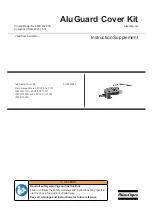
• Slide the selector (4) to the desired position
referring to the table below. The selector can be
manipulated during operation.
Pos. Wood
Metal
Plastics
3
Fast cuts
-
PVC
2
Thick workpieces
-
Fibreglass
Acrylic
1
Plywood
Aluminium
-
Chipboard
Non-ferrous
-
0
Thin workpieces
Sheet metal
-
Fine cuts
Optional accessories
Installing the parallel fence (fig. J)
• Install the parallel fence (19) as shown.
Installing the trammel bar (fig. K)
• Install the trammel bar (20) as shown.
• Secure the trammel bar in the centre of the hole
to be cut.
Instructions for use
• Always observe the safety instructions
and applicable regulations.
• Make sure your workpiece is well
secured. Remove nails, screws and other
fasteners that may damage the blade.
• Check that there is sufficient space for
the blade underneath the workpiece.
Do not cut materials that are thicker than
the maximum cutting depth.
• Use sharp saw blades only. Damaged or
bent saw blades must be removed
immediately.
• Do not use the tool for sawing pipes
or tubes.
• Never run your tool without a saw blade.
• For optimal results, move the tool
smoothly and constantly over the
workpiece. Do not exert lateral pressure
on the saw blade. Keep the shoe flat on
the workpiece and lead the cord away in
line with the tool. When sawing curves,
circles or other round shapes, push the
tool gently forward.
• Wait until the tool has come to a
standstill before removing the saw blade
from the workpiece.
After sawing the blade may be very hot.
Do not touch.
Switching on and off (fig. A)
DW321/DW322
• Switching on: press the on/off-switch (1).
The sawing speed of the DW321 varies with the
pressure exerted on the on/off-switch (1).
• For continuous operation, press the lock-on
button (3).
• Switching off: press the on/off-switch once more.
Always switch the tool off when the work is
finished and before unplugging.
DW323/DW324
• Switching on: slide the on/off-switch (1) to the front.
• Switching off: slide the on/off-switch to the rear.
Always switch the tool off when the work is
finished and before unplugging.
Sawing in wood
• If necessary, draw a cutting line.
• Switch the tool on.
• Hold the tool against the workpiece and follow
the line.
• For sawing parallel to the edge of your
workpiece, install the parallel fence and guide
your jigsaw along the workpiece as shown in
figure J.
Sawing in wood using a pilot hole
• If necessary, draw a cutting line.
• Drill a hole (ø min. 12 mm) and introduce the saw
blade.
• Switch the tool on.
• Follow the line.
• For cutting perfectly round shapes, install the
trammel bar and set it to the required radius.
Sawing up to a projecting edge (fig. D)
• Remove the straight/round cut guide, if installed.
• Set the pendulum stroke selector to 0.
• Loosen the screw (14) using the Allen key (13).
• Push the shoe (6) all the way backward.
E N G L I S H
21
en - 6
Содержание DW321
Страница 1: ... DW322 DW321 DW323 DW324 ...
Страница 3: ...A A DW323 DW324 DW321 DW322 ...
Страница 4: ...B C D E 9 12 13 4 mm 6 14 13 15 5 mm 16 5 8 ...
Страница 5: ...F G H 17 18 DW321 DW323 ...
Страница 6: ...L K J I ...
Страница 101: ......
Страница 102: ......
Страница 103: ......
















































